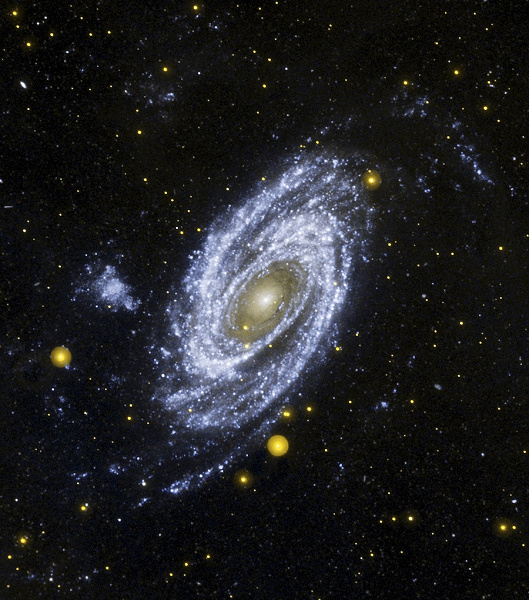Researchers have created simulations of the ultraviolet glow of ancient galaxies to understand the early Universe
Scientists already know that the ultraviolet brightness of low-mass galaxies can provide key information about the formation and development of the Universe. Using ancient ultraviolet radiation is opening new horizons in testing a leading theory in cosmology. Scientists study the formation and evolution of galaxies in the early Universe to test predictions from cosmological models. Recent research has shown that the ultraviolet brightness of low-mass galaxies just a few hundred million years after the Big Bang may provide a tool for identifying differences between different cosmological models.
The leading theory of cosmology, known as ΛCDM, describes a Universe where visible or baryonic matter makes up only 15% of the total mass of matter. The remaining 85% — This is a mysterious dark matter, the essence of which still remains unknown. Dark matter, although it does not have a significant impact on our daily lives, played a key role in the early evolution of the Universe, determining the conditions and mechanisms for the formation of galaxies with different masses.
Understanding the interactions between dark matter and baryonic matter in the early Universe may be important for testing cosmological models. According to ΛCDM, at the very beginning of the Universe, shortly after the formation of protons and electrons into atoms, there were regions where normal matter moved at supersonic speeds relative to dark matter. This relative motion had a significant impact on the formation of the first stars and galaxies, possibly having measurable consequences for galaxies in the modern Universe.
Scientists, led by Claire Williams from the University of California, have attempted to understand the influence of supersonic motion on the formation of low-mass galaxies. Using high-resolution simulations of multiphase dynamics, Williams' team simulated the evolution of galaxies at different redshifts from 200 to 12. This means that the researchers took into account the processes of galaxy formation at different points in time in the history of the Universe. Such a wide range of redshifts allows us to cover different eras of the development of the Universe. For example, at a redshift of 200 we are talking about the most distant and earliest galaxies, formed shortly after the Big Bang. At the same time, at redshift 12 in the sample there are already quite close and relatively more «modern» galaxies. This allows scientists to assess the influence of supersonic motion on the formation and evolution of galaxies at different stages of the history of the Universe.
The researchers took into account the processes of cooling and condensation of molecular clouds, the ignition of the first stars and the formation of galaxies and star clusters. The results of the study showed that when baryonic and dark matter moved relative to each other at supersonic speeds, the formation of low-mass galaxies was difficult. Galaxies with masses less than 3 million solar masses were formed in ten times smaller numbers given the difference in speed. Large galaxies, in turn, formed independently of this difference.
To understand the relationship between the formation of galaxies and their ultraviolet brightness, scientists looked at the ultraviolet brightness function, which determines the number of galaxies with a certain ultraviolet brightness. It turned out that differences in velocities affect this function at redshift 12. In regions without supersonic flow, small galaxies and star clusters quickly formed and began star formation.
However, in regions with supersonic flow, small galaxies were rare, and the gas that should have helped in their formation instead stimulated star formation in more massive galaxies. As a result, the ultraviolet brightness function was lower for the smallest and faintest galaxies, but increased for faint, slightly brighter galaxies at redshift 12.
To study the ultraviolet brightness of galaxies in the ancient past, modern telescopes such as the James Webb Space Telescope (JWST) provide unique capabilities. JWST is capable of measuring the ultraviolet brightness of galaxies at infrared wavelengths. This opens up broad opportunities for studying the cosmology of the early Universe and comparing data with various models. The use of ultraviolet radiation to test cosmological models expands understanding of the formation and evolution of the Universe.

